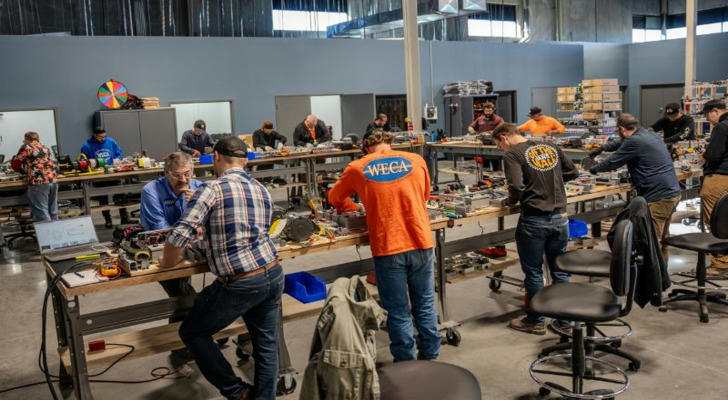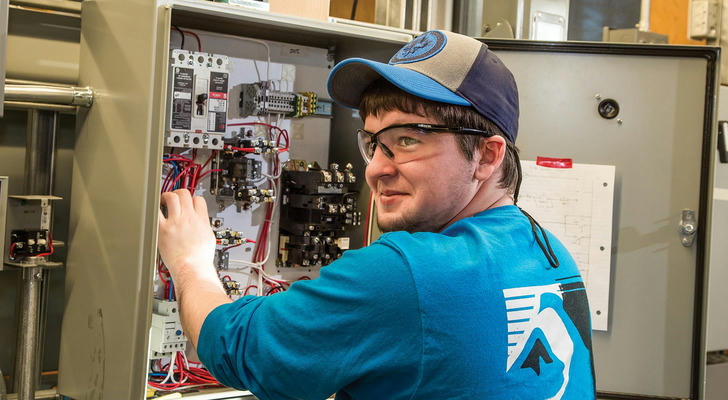How Long Does It Take to Become a Licensed Electrician? Government Support + Paid Training
Becoming a licensed electrician in the United States is a structured process that combines education, hands-on training, and examinations. The journey typically spans several years, but with the support of government initiatives and corporate-sponsored paid training programs, aspiring electricians can navigate this path more efficiently and affordably. This article explores the timeline to licensure, highlights U.S. government support for electrician training, and examines corporate-sponsored paid training opportunities.

Understanding the Path to Licensure
The process of becoming a licensed electrician generally involves the following stages:
Educational Foundation: A high school diploma or equivalent is typically required. Courses in mathematics, physics, and technical subjects provide a solid groundwork.
Pre-Apprenticeship Training (Optional): Some candidates choose to enroll in technical schools or community colleges for foundational electrical training, lasting from six months to two years.
Apprenticeship: This is the core of electrician training, combining paid on-the-job experience with classroom instruction. Apprenticeships usually last between four to five years and require a set number of work hours and classroom education.
Licensing Examination: After completing an apprenticeship, candidates must pass a state-specific exam to become licensed.
The entire journey typically takes between five to seven years, depending on individual circumstances and state requirements.
Government Support for Electrician Training
The U.S. government offers several programs to support individuals pursuing careers in the electrical trade:
Carl D. Perkins Vocational and Technical Education Act
First authorized in 1984 and reauthorized multiple times, most recently in 2018, the Carl D. Perkins Act aims to enhance the quality of technical education across the nation. It provides approximately $1.2 billion in federal support for career and technical education programs, including those for aspiring electricians. This funding assists states in developing programs that integrate academic and technical content, facilitating pathways from secondary to post-secondary education.
ApprenticeshipUSA
Managed by the U.S. Department of Labor, ApprenticeshipUSA is a national initiative that promotes registered apprenticeship programs across various industries, including electrical work. These programs combine on-the-job training with classroom instruction, allowing participants to earn while they learn. The initiative supports employers and educational institutions in developing and scaling apprenticeship programs, ensuring a skilled workforce pipeline.
Support for Veterans
Recognizing the valuable skills that veterans bring to the workforce, various local apprenticeship programs actively recruit former military personnel. For instance, the Building Trades Educational Benefit Fund's apprenticeship program emphasizes self-discipline, teamwork, and goal setting—qualities honed in the military. Veterans like Chris Bornschein and Dylan DeBrosse have successfully transitioned into electrical careers through such programs, which often provide guidance on educational and job opportunities tailored to veterans.

Corporate-Sponsored Paid Training Programs
Many private organizations and unions offer paid apprenticeship programs, enabling individuals to earn a wage while receiving training:
Independent Electrical Contractors (IEC)
The IEC offers a four-year apprenticeship program that combines on-the-job training with classroom instruction. Apprentices work full-time with member contractors and attend classes one night per week. The program is recognized by the U.S. Department of Labor and provides a comprehensive education in electrical theory, code, and practical applications.
Electrical Alliance Joint Apprenticeship Training Committee (JATC)
Based in the Washington, D.C. area, the Electrical Alliance's JATC program offers a blend of classroom education and paid field experience. Apprentices can choose from tracks such as Inside Electrical, Residential, and Technology Services, each with its own duration and focus. The program emphasizes earning while learning, with first-year apprentices receiving competitive compensation and benefits.
Western Electrical Contractors Association (WECA)
WECA provides apprenticeship programs in California, Arizona, and Utah. Their programs, ranging from three to five years, combine paid on-the-job training with classroom instruction. Apprentices attend intensive classroom sessions for two weeks twice a year, allowing them to focus on hands-on learning during the rest of the year. WECA's programs are recognized for their high graduation rates and comprehensive curriculum.
International Brotherhood of Electrical Workers (IBEW)
The IBEW, in partnership with the National Electrical Contractors Association (NECA), offers apprenticeship programs through local Joint Apprenticeship and Training Committees (JATCs). These programs typically last five years and include both classroom instruction and on-the-job training. Apprentices receive incremental wage increases as they progress and gain experience. Graduates often attain journeyman status, allowing them to work independently.
Benefits of Government and Corporate Support
Engaging in programs supported by government initiatives and corporate sponsorships offers several advantages:
Financial Accessibility: Paid apprenticeships reduce or eliminate the need for student loans, making career training more accessible.
Hands-On Experience: Combining classroom instruction with real-world experience ensures that apprentices are job-ready upon completion.
Employment Opportunities: Many programs have strong ties to employers, facilitating job placement after training.
Career Advancement: Structured programs often provide clear pathways for advancement, from apprentice to journeyman and beyond.

Conclusion
The journey to becoming a licensed electrician in the U.S. is a commitment that typically spans several years. However, with the support of government initiatives like the Carl D. Perkins Act and ApprenticeshipUSA, along with corporate-sponsored paid training programs offered by organizations such as IEC, Electrical Alliance, WECA, and IBEW, aspiring electricians have access to resources that make this path more attainable. These programs not only provide an opportunity to achieve high-paying employment, but also reduce their financial burden.
